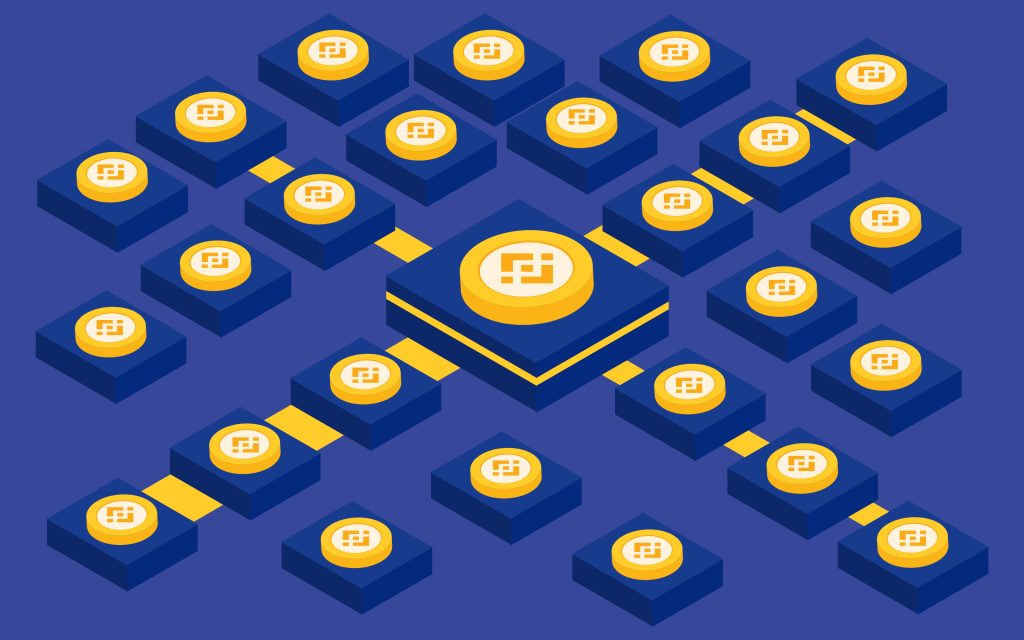BEP-2, a token standard that has revolutionized the Binance Chain ecosystem, has facilitated a seamless integration of tokens within the blockchain platform. If you’re curious about how BEP-2 works and why it’s crucial for Binance Chain, you’ve come to the right place. In this comprehensive guide, we’ll dive deep into the world of BEP-2, exploring its history, features, and use cases, as well as how it compares to other token standards in the crypto landscape.
Understanding the BEP-2 Standard: A Foundation for Binance Chain’s Success


To fully grasp the significance of BEP-2, let’s first understand what a token standard is. A token standard is a set of technical specifications that outline the rules and guidelines for creating and implementing tokens on a particular blockchain platform. For Binance Chain, BEP-2 serves as the foundational token standard, akin to Ethereum’s well-known ERC-20 standard.
BEP-2 is not a piece of software; instead, it’s a blueprint that ensures all tokens in the BNB Beacon Chain ecosystem follow a consistent set of rules, allowing them to interact smoothly with one another. By adhering to the BEP-2 standard, tokens can efficiently integrate with various applications on both the BNB Beacon Chain and BNB Smart Chain, ultimately enhancing the overall user experience.
Although BEP-2 outlines the essential rules, each token can have different implementations based on its unique use case. This flexibility allows for diverse applications while still maintaining a uniform structure, simplifying the process of token issuance for developers.
BEP-2 Tokens and their Multifaceted Use Cases: Unlocking the Potential of Binance Chain
The versatility of BEP-2 tokens is one of their most attractive features. They can represent a plethora of digital assets and tradable goods, such as cryptocurrencies, digital collectibles, or utility tokens for specific platforms. Thanks to the BEP-2 standard, these tokens can quickly integrate with various decentralized applications (dApps) running on both the BNB Beacon Chain and BNB Smart Chain.
BEP-2 tokens are also tradable on Binance DEX, a decentralized exchange built on the BNB Beacon Chain. This provides users with a secure and efficient way to trade their tokens without relying on a centralized platform. Moreover, BEP-2 tokens play a crucial role in the rapidly growing decentralized finance (DeFi) ecosystem, enabling users to access lending, staking, and yield farming opportunities on Binance Smart Chain.
In summary, BEP-2 tokens have opened new doors for the Binance Chain ecosystem, empowering developers and users alike to build innovative applications and explore various use cases. As the crypto landscape continues to evolve, BEP-2 tokens will remain an essential component of the Binance Chain, driving its growth and success.
Managing BEP-2 Tokens: Storing, Transferring, and Interacting
Effectively managing BEP-2 tokens is essential for users to make the most of the Binance Chain ecosystem. To store, transfer, and interact with these tokens, users need a compatible wallet. Trust Wallet, a mobile wallet developed by Binance, is an excellent option for managing BEP-2 tokens. Other software wallets and hardware wallets like Ledger Nano X, Ledger Nano S, Trezor Model T, and Coolwallet S also support the BEP-2 standard.
When transferring BEP-2 tokens, users must have a small amount of BNB in their wallets to cover the transaction fees, similar to the gas fees on the Ethereum network. The BNB Beacon Chain Explorer is a valuable tool for browsing all tokens issued on the Binance Chain, enabling users to keep track of their BEP-2 tokens and associated transactions.
Issuing Your Own BEP-2 Tokens: A Step-by-Step Guide


If you’re interested in creating your own BEP-2 tokens, the process is straightforward. First, familiarize yourself with the detailed technical specifications on the Binance Chain GitHub. Once you have a solid understanding of the BEP-2 standard, follow these steps:
- Access the Binance Chain token issuance portal.
- Fill out the required information, such as the token name, symbol, and total supply.
- Specify the token’s precision and whether it is mintable or burnable.
- Choose the type of token (e.g., utility, governance, or NFT).
- Submit the token issuance request.
Before issuing tokens on the main Binance Chain, consider experimenting with your BEP-2 token ideas on the BNB Beacon Chain testnet. This allows you to test your concepts in a risk-free environment before deploying them on the mainnet.
For in-depth guides on token issuance and related topics, consult the Binance Chain Documentation.
Embracing the Future of Binance Chain with BEP-2 Token Standard
BEP-2 has played a pivotal role in the growth and development of the Binance Chain ecosystem. As a flexible and reliable token standard, BEP-2 enables the seamless integration of tokens, opening up a world of possibilities for developers and users alike. From trading on decentralized exchanges to participating in DeFi, BEP-2 tokens have become an indispensable part of the Binance Chain experience.
As the blockchain industry evolves and expands, BEP-2 will undoubtedly continue to shape the future of Binance Chain, fostering innovation and driving the adoption of decentralized applications and services.









